Global Biochar Fertilizer Market - Comprehensive Data-Driven Market Analysis & Strategic Outlook
The global biochar fertilizer market in the agricultural industry will experience a trajectory propelled by the search for eco-friendly soil agriculture practices. Its origins are traced to ancient societies, when charcoal was utilized in farms to render the ground fertile, albeit if these were limited and experimental. The modern form of this market will begin to come into being in the latter half of the 20th century as environmental awareness and soil erosion concerns started drawing world attention. Researchers in Europe and North America will conduct pathbreaking studies, making biochar a soil conditioner but also a global warming mitigation option with a potential.
- Global biochar fertilizer market is approximately USD 4456.2 million in 2025 and has a CAGR of around 7.8% from 2032 with possible potential to exceed USD 7541.7 million.
- Organic share has nearly 41.4% market share, contributing to growth and diversified applications through intense research.
- Key trends driving growth: Increased demand for organic and environmentally friendly farming practices, Increased recognition of the benefit of using biochar to improve soil fertility and carbon storage
- Opportunities include: Application of biochar to carbon offset programs and climate change mitigation efforts
- Key insight: The market will grow exponentially in terms of value over the coming decade, representing outstanding opportunity for growth.
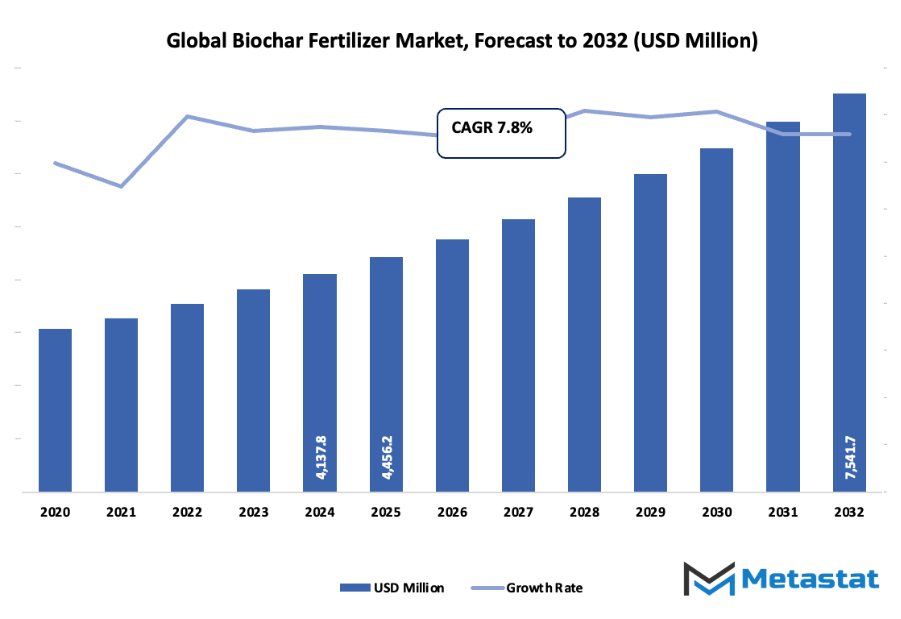
During the early 2000s, small-scale commercial production of Biochar Fertilizers will start to pick up, initially targeting niche organic farms and ecologically conscious farming populations. These programs will become milestone references, reflecting the substance's ability to retain nutrients, increase water retention capacity, and generate healthier crop production. Throughout the period, regulatory bodies of several countries will realize the existence of biochar as a material subject to soil conditioning and carbon sequestration legislation, paving the way for a system that future players in the global biochar fertilizer market will emulate and expand upon. Technological advancements will continue to revolutionize the market. New pyrolysis technology and feedstock diversification will allow manufacturers to produce biochar with specific nutrient composition for a variety of crops.
Concurrently, the development of precision agriculture will push the industry to mainstream biochar into more data-driven and precision-based soil management practices. The direction of the market will also be influenced by changes in consumer preferences. With growing awareness regarding sustainable agriculture and environmentally friendly food production, demand for Biochar Fertilizers that enhance soil health while reducing chemical inputs will expand. Global partnerships and pilot projects will be turning points in the development of the market, as governments, research institutions, and private enterprises demonstrate replicable production models. By integrating ancient knowledge and modern technology, the global Biochar Fertilizer industry will position itself to transform agriculture. Its development from ancient testing to science-based, commercially viable product will advance further, driven by environmental responsibility, technological ability, and shifting producer and consumer expectations worldwide.
Market Segments
The global biochar fertilizer market is mainly classified based on Nature, Application, Technology.
- Organic: The organic segment of the global biochar fertilizer market is witnessing high demand due to the requirement for natural soil modifiers. Organic Biochar Fertilizers are produced from plant and animal residues, providing nutrients without chemicals. These fertilizers are viewed as superior by farmers because they improve soil, promote microbial dynamics, and support agriculture
- Inorganic: The inorganic segment of the global biochar fertilizer market includes fertilizers that are chemically processed to enhance nutrient content availability. They aid in faster crop growth and yields. They find large-scale application where there is a need for enriching soil in a hurry. Even so, demand for inorganic Biochar Fertilizers is countered by the tendency toward organic options.
- Compound: Compound market segment of the global biochar fertilizer market offers a blend of organic and inorganic compounds in order to offer balanced nutrition to the soil. This type is capable of releasing nutrients quickly and conditioning soil in the long term. Compound fertilizers are utilized by farmers for providing sustained crop yield and for improving soil structure.
By Application the market is divided into:
- Animal Feed: In the global biochar fertilizer market, animal feed industries use biochar as an animal feed additive to enhance digestion and overall animal health. It helps in reducing toxins, improving nutrient absorption, and facilitating better excretion. Adding biochar to animal feed also helps in decreasing methane released by animals.
- Agriculture: The agricultural sector dominates the global biochar fertilizer market due to its vital role in farm production. Biochar Fertilizers are used to improve the fertility of soil, retain moisture, and avoid runoff of fertilizer. These benefits lead to increased crop yield and sustainable land use and have established biochar as a farmer's preference worldwide.
- Fish Farming: Fish farming segment of the global biochar fertilizer market is gaining momentum as biochar helps maintain water purity and balanced aquatic environment. Biochar purifies the water by removing contaminants and facilitates healthy microbial function in ponds, which leads to healthy fish production. Its usage is growing through its positive impacts on water quality along with fish productivity.
- Other: Others apply the global biochar fertilizer market in landscaping, horticulture, and land reclamation. Biochar is used to restore degraded lands and increase carbon stocks within soils. Its water and nutrient retention capabilities make it applicable in non-crop industries that are interested in soil recovery and conservation of the environment.
By Technology the market is further divided into:
- Slow Pyrolysis: Slow pyrolysis technology is used in the global biochar fertilizer market to produce quality biochar with fixed carbon content. The process operates at low temperature and extended residence time to offer solid biochar yield. Slow pyrolysis is widely used for agricultural and environmental applications due to its efficiency and sustainability.
- Fast Pyrolysis: Fast pyrolysis technology used in the global biochar fertilizer market focuses on producing bio-oil and biochar. It is conducted at high temperatures at high heating rates. The process produces a lower yield of biochar but is suitable for industries looking for the production of energy as well as value-added products along with utilizing the by-products for fertilizers.
- Gasification: global biochar fertilizer market's gasification technology converts biomass to a syngas and biochar mixture with partial burning. The biochar made contains concentrated carbon and minerals beneficial for application in the soil. Renewable energy production is made possible by this technology while still encouraging sustainable fertilizer production.
- Hydrothermal Carbonization: Hydrothermal carbonization of the global biochar fertilizer market is a high-pressure and moderate-temperature process to convert wet biomass to biochar-like material. It is a good method suitable for treating high-moisture-content organic waste. The product enhances the fertility of the soil and supports waste recycling processes.
|
Forecast Period |
2025-2032 |
|
Market Size in 2025 |
$4456.2 Million |
|
Market Size by 2032 |
$7541.7 Million |
|
Growth Rate from 2025 to 2032 |
7.8% |
|
Base Year |
2024 |
|
Regions Covered |
North America, Europe, Asia-Pacific, South America, Middle East & Africa |
By Region:
- Based on geography, the global biochar fertilizer market is divided into North America, Europe, Asia-Pacific, South America, and the Middle East & Africa.
- North America is further divided into the U.S., Canada, and Mexico, whereas Europe consists of the UK, Germany, France, Italy, and the Rest of Europe.
- Asia-Pacific is segmented into India, China, Japan, South Korea, and the Rest of Asia-Pacific.
- The South America region includes Brazil, Argentina, and the Rest of South America, while the Middle East & Africa is categorized into GCC Countries, Egypt, South Africa, and the Rest of the Middle East & Africa.
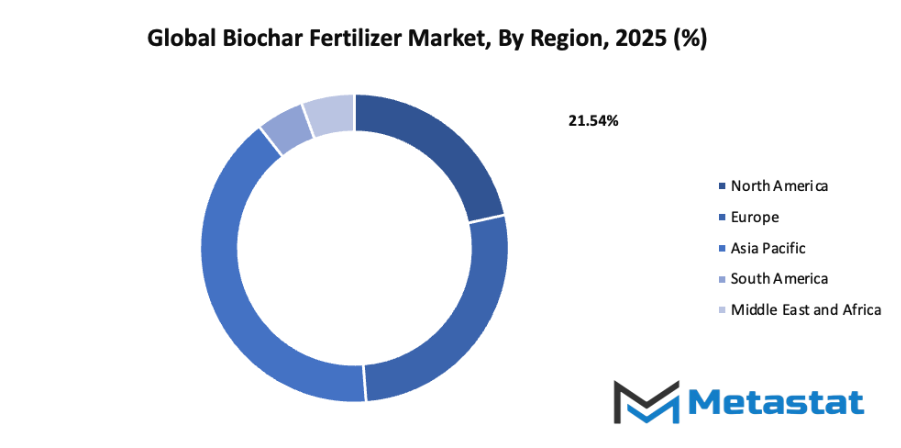
Growth Drivers
- Increasing demand for organic and sustainable agricultural practices: The global biochar fertilizer market will benefit from the rising need for environmentally friendly farming methods. Farmers and agricultural industries are shifting toward natural fertilizers to reduce chemical use, maintain soil health, and improve crop yield, which will continue to drive adoption of biochar-based solutions.
- Growing awareness of the benefits of biochar in improving soil fertility and carbon sequestration: The global biochar fertilizer market will experience growth as more stakeholders understand biochar's positive effects on soil structure, nutrient retention, and moisture management. Its ability to capture carbon and reduce greenhouse gas emissions will further encourage its use in sustainable agriculture practices.
Challenges and Opportunities
- High production costs associated with biochar production: The global biochar fertilizer market faces obstacles due to expensive raw materials and energy-intensive manufacturing processes. These costs can limit accessibility for smaller farms and emerging markets, making large-scale adoption slower despite clear environmental and agricultural advantages.
- Lack of standardized regulations and certifications for biochar products: The global biochar fertilizer market encounters challenges from inconsistent quality standards. The absence of unified regulations makes it difficult for producers to ensure reliability and for buyers to assess product effectiveness. This regulatory gap will influence market confidence and slow widespread adoption.
Opportunities
- Adoption of biochar in carbon offset initiatives and climate change mitigation efforts: The global biochar fertilizer market holds significant potential as governments and organizations integrate biochar into carbon reduction strategies. Using biochar to sequester carbon and reduce greenhouse gas emissions will create new markets, partnerships, and funding opportunities for producers and agricultural stakeholders.
Competitive Landscape & Strategic Insights
The global biochar fertilizer market is witnessing a dynamic transformation that will shape the future of sustainable agriculture and soil management. This industry is a mix of both international industry leaders and emerging regional competitors, creating a landscape that is highly competitive and innovative. Companies such as Carbon Gold, Lewis Bamboo, Pacific Biochar Benefit Corporation, Carbonis GmbH & Co. KG, Anulekh, Vedic Orgo LLP, and Sane Shell Carbon are playing pivotal roles in driving technological advancements, promoting eco-friendly solutions, and expanding market reach. Each of these players is contributing unique approaches to production, distribution, and research, which will influence how the industry develops over the next decade.
The demand for biochar-based fertilizers is expected to increase significantly due to rising environmental awareness and the urgent need to enhance soil fertility while reducing carbon emissions. International leaders are leveraging established networks and technological expertise to produce high-quality products at scale, while regional competitors are focusing on innovation, local sourcing, and customized solutions to meet specific agricultural needs. This combination of global influence and localized ingenuity will accelerate the adoption of Biochar Fertilizers worldwide.
Futuristically, the industry will likely see increased integration of digital tools, including precision agriculture systems and data-driven soil management, to optimize fertilizer application. Companies such as Carbon Gold and Pacific Biochar Benefit Corporation are already exploring advanced methods to improve efficiency and sustainability. At the same time, regional innovators like Vedic Orgo LLP and Anulekh will continue to push boundaries in material sourcing, cost-effective production, and localized distribution, ensuring that even smaller agricultural markets have access to sustainable solutions.
Environmental regulations and sustainability initiatives will further drive growth, encouraging both established and emerging players to adopt greener practices. This focus on ecological responsibility will result in fertilizers that not only improve crop yields but also enhance soil health and carbon capture. Collaborations between international leaders and regional competitors may become more common, enabling knowledge sharing, technology transfer, and broader market penetration.
Market size is forecast to rise from USD 4456.2 million in 2025 to over USD 7541.7 million by 2032. Biochar Fertilizer will maintain dominance but face growing competition from emerging formats.
In the coming years, the global biochar fertilizer market will not only expand in size but also evolve in sophistication. Advanced research and strategic investments will create products that are more efficient, environmentally friendly, and suited to the diverse needs of farmers across continents. The mix of well-established corporations and ambitious regional players ensures a competitive yet innovative environment, setting the stage for a future where sustainable agriculture is both viable and scalable.
Report Coverage
This research report categorizes the Biochar Fertilizer market based on various segments and regions, forecasts revenue growth, and analyzes trends in each submarket. The report analyses the key growth drivers, opportunities, and challenges influencing the Biochar Fertilizer market. Recent market developments and competitive strategies such as expansion, type launch, development, partnership, merger, and acquisition have been included to draw the competitive landscape in the market. The report strategically identifies and profiles the key market players and analyses their core competencies in each sub-segment of the Biochar Fertilizer market.
Biochar Fertilizer Market Key Segments:
By Nature
- Organic
- Inorganic
- Compound
By Application
- Animal Feed
- Agriculture
- Fish Farming
- Other
By Technology
- Slow Pyrolysis
- Fast Pyrolysis
- Gasification
- Hydrothermal Carbonization
Key Global Biochar Fertilizer Industry Players
- Carbon Gold
- Lewis Bamboo
- Pacific Biochar Benefit Corporation
- Carbonis GmbH & Co. KG
- Anulekh
- Vedic Orgo LLP
- Sane Shell Carbon
WHAT REPORT PROVIDES
- Full in-depth analysis of the parent Industry
- Important changes in market and its dynamics
- Segmentation details of the market
- Former, on-going, and projected market analysis in terms of volume and value
- Assessment of niche industry developments
- Market share analysis
- Key strategies of major players
- Emerging segments and regional growth potential



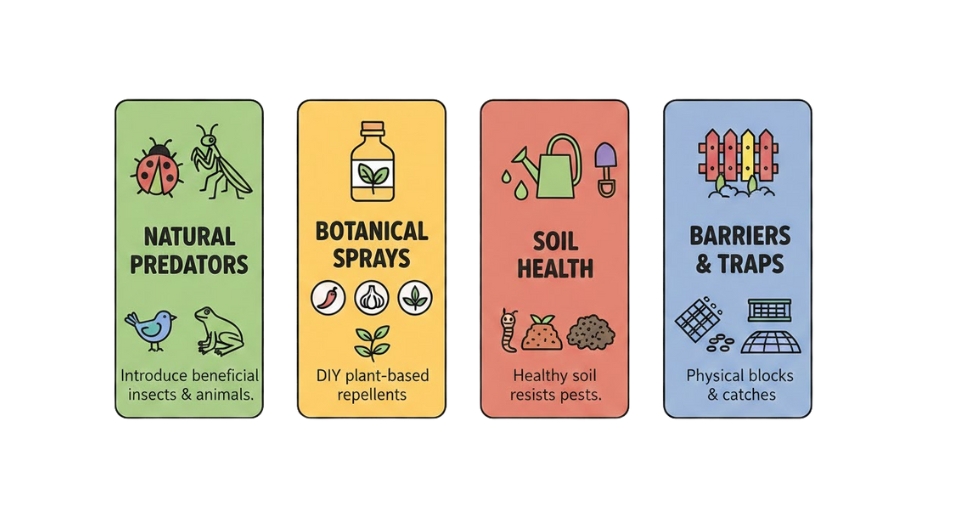
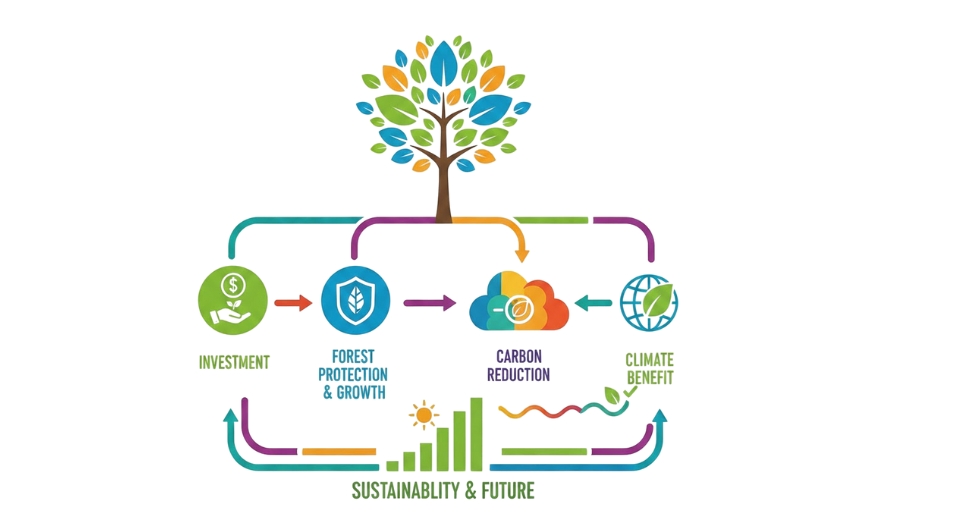
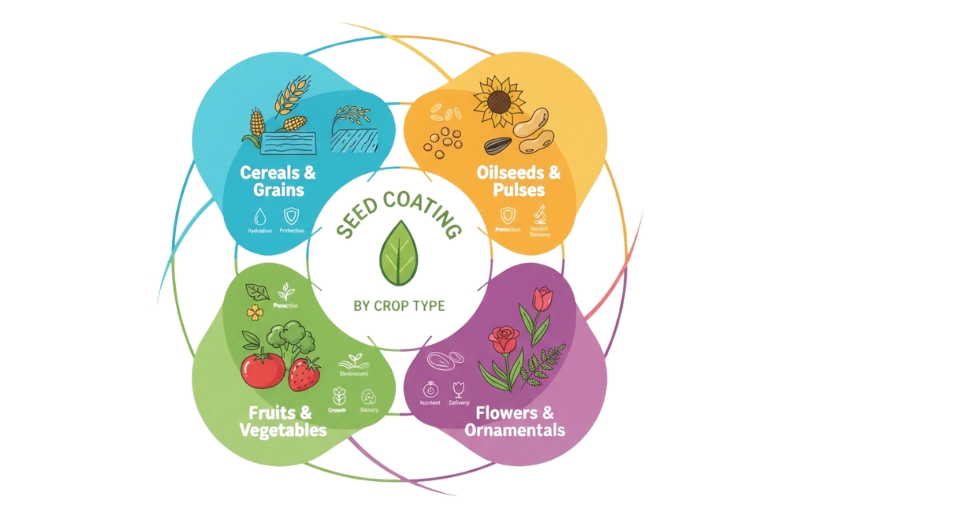
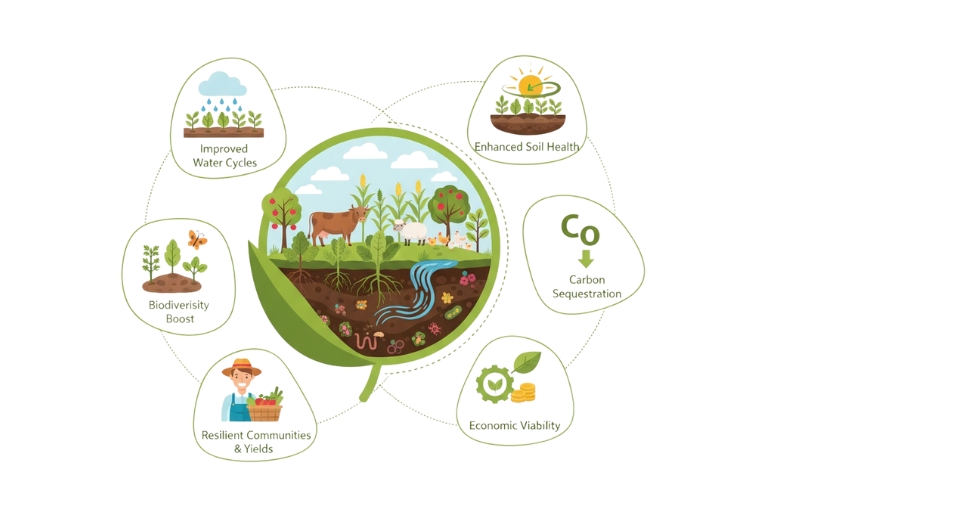

 US: +1 3023308252
US: +1 3023308252






